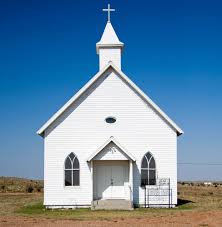Services
MASSES ON SUNDAY
06:00 a.m. (English)
07:00 a.m. (English)
08:00 a.m. (English)
09:00 a.m. (English)
10:00 a.m. (English)
05:00 p.m. (Konkani)
06:00 p.m. (English)
The Old Church: The foundation of the original St Peter’s Church was laid in April 12, 1852, by Bishop Hartmann. The Church was completed in September 1853. It measured approximately 100 by 75 feet. In 1867 a second storey was added to the old top floor.
The storey above the Church was at first used as the priests’ residence and parish school. In 1855, the Jesuit Seminary was transferred from Surat to Bandra, and the seminary and the parish schools were merged. In 1863, the seminary was again transferred to Bombay, and the Boys’ Orphanage from Bombay came to Bandra. This was the beginning of the St Stanislaus’ High School.
The New Church: As far back as August 1887, the then Archbishop of Bombay issued the following appeal: “The poor parish of St. Peter’s Bandora, numbers with the orphans (boys and girls) 2215 souls and has for a church the floor of the boys’ Orphanage. This place is much too small and is ill-suited for divine service. A new and more spacious Church is much needed and will be a great benefit to the poor Parishioners and the Orphans”.
On the sides are five joyful and five glorious mysteries with two windows depicting the life of St Stanislaus. The spacious choir-loft with its large semi-circular stained-glass window shows Christ entrusting the sheep to St Peter. The marble Baptismal font on the left as you enter also has a stained-glass window depicting the baptism of Jesus by St John the Baptist. It is interesting to note that all the stained-glass windows were designed and made in China by a Jesuit laybrother.
The exquisite main altar is Carrara marble, the façade of which has the Last Supper of Leonardo da Vinci carved in relief. Above the tabernacle is a marble cupola, supported by six Alpine green colonnades with a background in delicately figured-marble. At both ends of the alter, are two life-size angels in marble, each holding aloft a flambeau. On either side of the alter are two small stained-glass windows, depicting angels in adoration.
Above the altar is an imposing and larger-than-life-size statue of the Sacred Heart, flanked by stained-glass windows, showing scenes in the life of St Peter.
Few churches are consecrated and St Peter’s was privileged with this unique honour on November 28, 1964.
The date is especially memorable because it marked the start of the International Eucharistic Congress in Bombay, and also the Silver Jubilee of the new St Peter’s.
Bishop Longinus Pereira Auxiliary Bishop of Bombay, performed the ancient ritual with pomp and pageantry, before a large gathering.
From St Peter’s Rome to St Peter’s Bandra: History was written at the International Eucharistic Congress of 1964 when a Pope stepped out of the Vatican and made a pilgrimage to Bombay. History was also written in the annals of our Church when the man from St Peter’s, Rome, visited St Peter’s, Bandra. December 5, 1964 is a date to remember.
Along the route from the city up to the Basilica of our Lady of the Mount (which he also visited) waving crowds waited tirelessly to cheer the Holy Father. At St Peter’s Bandra, a hushed and crowded flock waited in breathless anticipation to catch a fleeting glimpse of its shepherd. His brief homily, was like manna; his papal blessing a purifying rain and the golden chalice he presented to the church remains a memento of the day, history was written at St Peter’s Bandra.
Heritage Structure: The Urban Development Department of the Government of Maharashtra has listed the Church as a Grade II heritage structure. In 1995 the Church was awarded the prestigious Urban Heritage Award.
